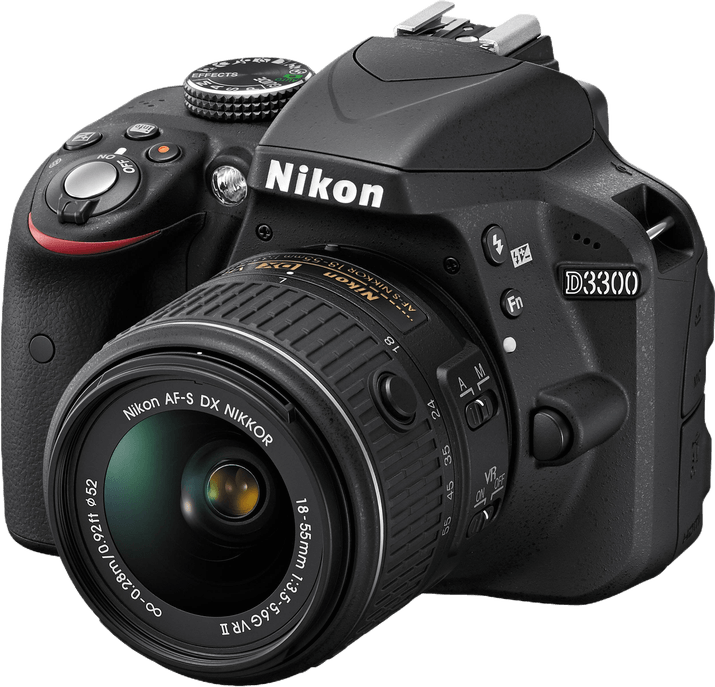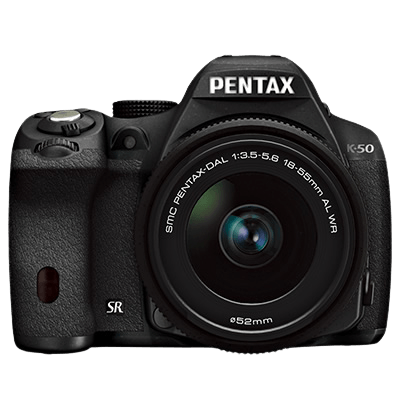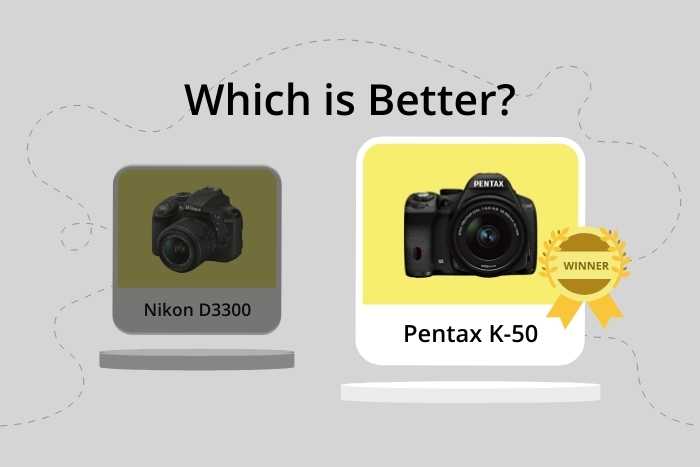Nikon D3300 vs Pentax K-50 Comparison
Nikon D3300

Pentax K-50

The Pentax K-50 edges out the Nikon D3300 with a score of 57/100 compared to the D3300’s 55/100. Both cameras are DSLRs, released in 2013 and 2014 respectively. They share similar dimensions, with the K-50 measuring 130 x 97 x 71mm and the D3300 at 124 x 98 x 76mm.
The Pentax K-50 has a lower launch price of $599, while the Nikon D3300 came in at $650. The K-50’s lower price and higher score make it a better option for potential buyers. However, the Nikon D3300 has a significant advantage in weight, coming in at 430g compared to the K-50’s 650g. This makes the D3300 a more portable option for photographers on the go.
Taking into account the scores, prices, and weight differences, the Pentax K-50 appears to be a better value for the money, while the Nikon D3300 offers greater portability.
Nikon D3300 vs Pentax K-50 Overview and Optics
The Nikon D3300 outperforms the Pentax K-50 in optics with a score of 64/100 compared to the K-50’s 62/100. Both cameras share some common specifications, such as having a CMOS sensor, an APS-C sensor size, and similar lens mounts (Nikon F DX for the D3300 and Pentax KAF for the K-50).
The Nikon D3300 boasts a higher megapixel count at 24.2, allowing for more detailed images, compared to the Pentax K-50’s 16.28 megapixels. Additionally, the D3300 has a superior processor, Expeed 4, which contributes to better image quality and faster processing times. The D3300 also has a higher DXOMARK sensor score of 82, indicating better overall image quality.
On the other hand, the Pentax K-50 offers a faster shooting speed of 6 frames per second, which is beneficial for capturing fast-moving subjects. The K-50 also features image stabilization, providing an advantage when shooting handheld or in low light conditions.
Considering these factors, the Nikon D3300’s higher megapixel count, better processor, and superior DXOMARK sensor score make it the more suitable choice for photographers seeking better image quality. However, the Pentax K-50’s faster shooting speed and image stabilization may appeal to those who prioritize capturing action shots or shooting in challenging conditions.
In comparing the optics of the Nikon D3300 and the Pentax K-50, the D3300 emerges as the winner due to its superior image quality, while the K-50 offers advantages in speed and stability.
Nikon D3300 vs Pentax K-50 Video Performance
The Pentax K-50 slightly outperforms the Nikon D3300 in video capabilities, scoring 57/100 compared to the D3300’s 56/100. Both cameras share some common specifications, including a Full HD maximum video resolution and 1920 x 1080 maximum video dimensions.
The Pentax K-50 proves superior with its built-in time-lapse functionality, which the Nikon D3300 lacks. This feature allows photographers to create stunning time-lapse videos without the need for additional equipment or software, making it a valuable asset for those who enjoy capturing the passage of time in their work.
On the other hand, the Nikon D3300 offers a higher maximum video frame rate at 60fps, compared to the Pentax K-50’s 30fps. This advantage enables the D3300 to capture smoother and more detailed video footage, especially in fast-paced or action-packed scenes. This higher frame rate can be particularly beneficial for sports or wildlife videographers who require crisp, fluid motion in their videos.
While the Pentax K-50 has the edge with its time-lapse functionality, the Nikon D3300 excels in capturing smoother video footage due to its higher frame rate. Both cameras have their strengths and weaknesses, ultimately catering to different videography preferences and needs. Prospective buyers should consider which features are most important to them when deciding between these two capable cameras.
Nikon D3300 vs Pentax K-50 Features and Benefits
The Pentax K-50 emerges as the winner in the features category, with a score of 54 out of 100, while the Nikon D3300 scores 41 out of 100. Both cameras have certain specifications in common, such as a 3-inch screen size, a screen resolution of 921,000 dots, and the absence of a touchscreen, flip screen, GPS, WIFI, and Bluetooth.
The Pentax K-50 has a higher score, which indicates that it has more advanced features than the Nikon D3300. However, it is important to note that this does not necessarily mean that the Pentax K-50 is the better camera overall. The specific features that contribute to its higher score should be carefully considered to determine if they are relevant to the user’s needs.
On the other hand, the Nikon D3300 may have a lower score, but it may excel in other areas such as optics and video quality. In addition, it may offer better value for money, depending on the user’s requirements and budget. It is essential to weigh the pros and cons of each camera’s features and performance before making a decision.
Taking into consideration the features of both cameras, the Pentax K-50 offers a slight advantage in terms of advanced features. However, the Nikon D3300 should not be disregarded, as it may provide better performance in other aspects. Ultimately, the choice between these two cameras will depend on the user’s specific needs and preferences.
Nikon D3300 vs Pentax K-50 Storage and Battery
The Nikon D3300 wins in the storage and battery category with a score of 32/100, while the Pentax K-50 scores 24/100. Both cameras have one memory card slot and accept SD, SDHC, and SDXC cards. Neither camera offers USB charging.
The Nikon D3300 outperforms the Pentax K-50 in battery life, providing 700 shots compared to the K-50’s 410 shots. This advantage stems from the D3300’s battery type, the EN-EL14a, which lasts longer than the K-50’s D-LI109 battery.
On the other hand, the Pentax K-50 does not surpass the Nikon D3300 in any storage or battery-related aspect. The only similarity between the two cameras in this category is the lack of USB charging.
Taking these factors into account, the Nikon D3300 proves to be the superior choice in terms of storage and battery capabilities. The longer battery life makes it a more reliable option for extended photo sessions, while the Pentax K-50 falls short with a lower battery life and no additional benefits in this category.
Nikon D3300 vs Pentax K-50 Alternatives
If you’re still unsure which camera is best for you, get inspired with some of our other popular comparisons:

